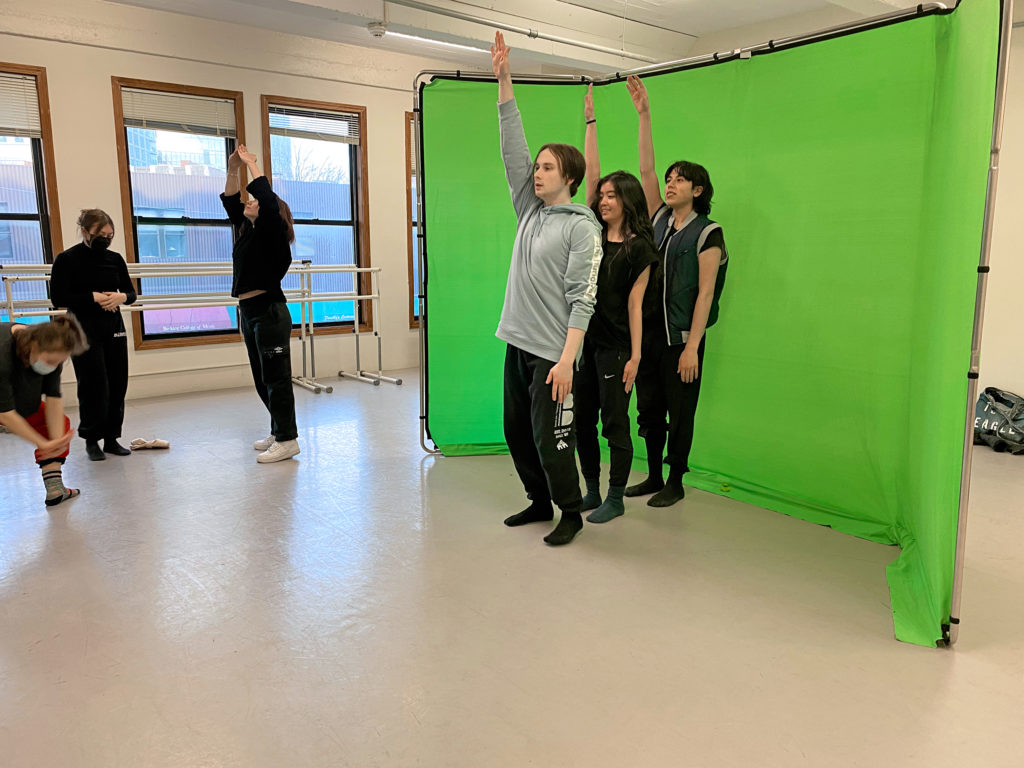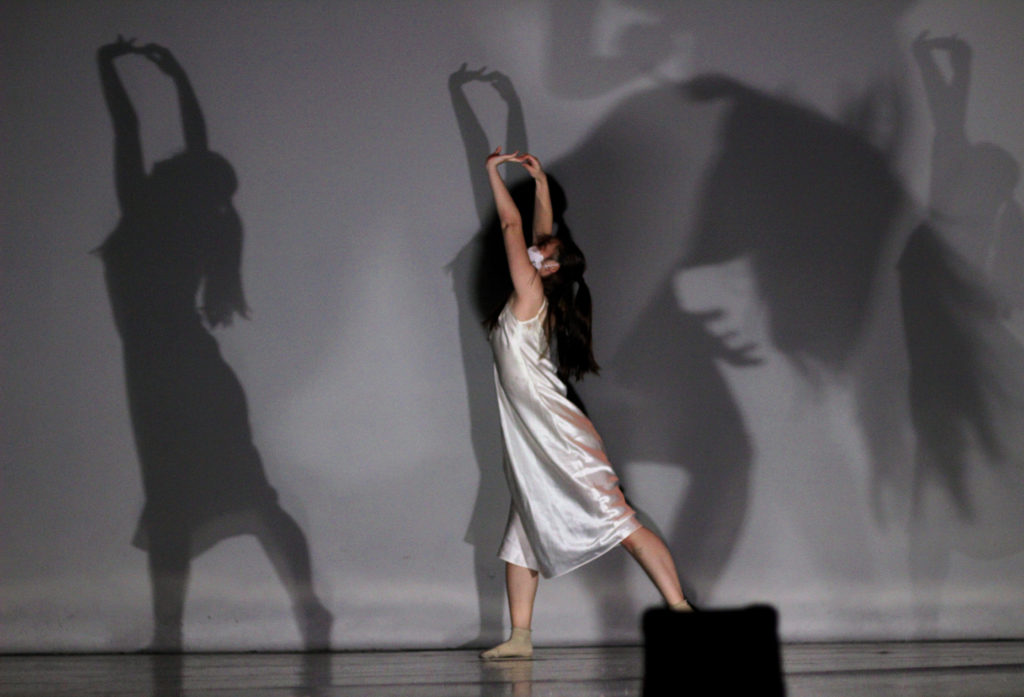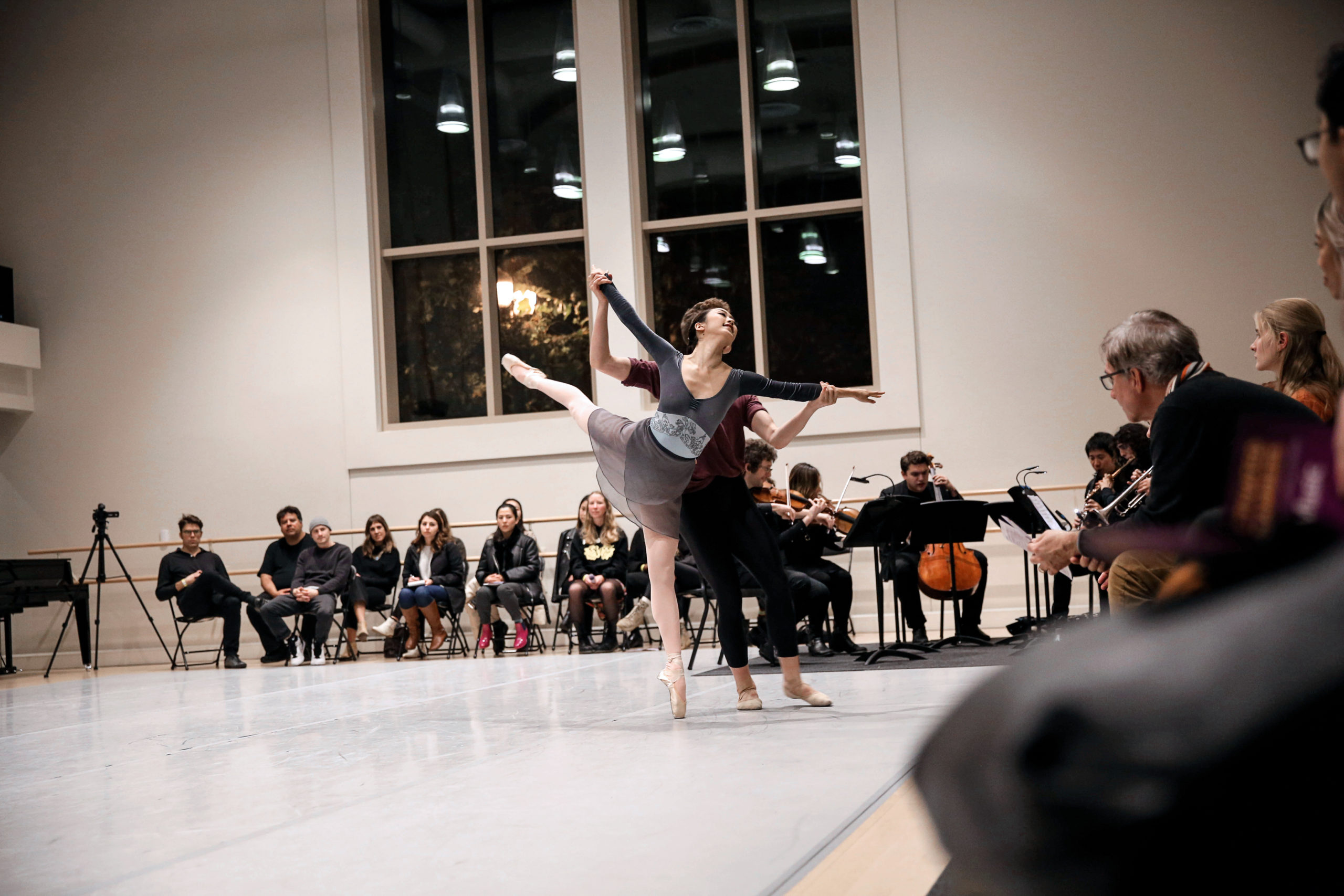Why College Dance Students Should Pursue Cross-Departmental Collaborations
“Interdisciplinary thinking is the foundation for innovation,” says Alissa Cardone, associate professor of dance at the Boston Conservatory at Berklee. She believes that humans are hardwired for collaboration, and that interdisciplinary projects lead to vital learning: Collaborating helps students create a network beyond the dance world, build complex problem-solving and communication skills, and experiment with new ways of moving. Liberal arts colleges in particular provide numerous opportunities for dance students to collaborate with a variety of disciplines, all in one location—dance can be paired with film, music, technology, visual art and more, and dancers who take advantage of cross-departmental collaboration can grow in unexpected ways, both as artists and as people.
One of the biggest benefits of working across disciplines is that it requires the collaborators to stretch beyond their habitual methods of creating, which can lead to a richer perspective. “Sometimes we fall into this traditional view of concert dance as just movement onstage, but collaborating pushed me to challenge what I view as dance,” says Nana Otaka, a dance and psychology major at the University of Michigan, who has worked with students in the music, visual arts, musical theater and filmmaking departments.
Finding common ground with collaborators is often the most challenging, and most rewarding, part of a project. Jennifer McQuiston Lott, assistant professor at USC Glorya Kaufman School of Dance, believes “being forced to communicate with someone else who doesn’t have the same language around their artwork that you do” is invaluable. For example, when collaborating with film, Cardone says, “dancers need to understand film language, and the filmmakers need to understand the language of dance so they can find a common language.”
Lott also sees cross-departmental collaboration as preparing dancers for a “yes, and” career. There’s no need to limit yourself to dance performance—you can pair dance with nearly any other interest you have, no matter how broad, to discover possible career paths. Consider exploring fields like dance science, dance journalism or dance filmmaking.
Interdisciplinary Inspiration

Virtual Reality
Alissa Cardone co-leads a dance and technology lab at the Boston Conservatory at Berklee, where dancers have the opportunity to create choreography for a virtual-reality experience. “Our students are choreographing, filming, motion-capturing and processing visuals into video imagery,” she says. For an ongoing project called “Dream Machine,” students in multiple disciplines combine dance, electronic music production, 3-D modeling and game design, among other practices, building on research into coding, Afrofuturism and the development of virtual-reality experiences.
Visual Art
In a student collaboration at the University of Michigan amongst visual art, film and dance, Nana Otaka experimented with using acrylic paint, charcoal and olive oil on her body while performing, and the team played with lighting and sound distortion to create a unique kinesthetic experience. “It felt like discovering a new realm or mode of movement,” she says.
Spoken Word
Otaka’s favorite collaborative project was a work with all Japanese dancers focusing on the Atlanta shootings targeting Asian women, created for an annual student showcase. She reached out to a Japanese musical theater major to create a spoken-word recording, to which she then choreographed movement. “The dance was made more impactful and powerful by the spoken word,” says Otaka.
The Options Are Endless
During their senior year, dance majors at USC Glorya Kaufman must collaborate with two fields outside of dance. Students have partnered with marketing, nutrition, exercise science, filmmaking and more. One who double-majored in dance and architecture designed a performance space. Another wrote a book to teach institutions how to make their spaces more inviting for transgender dancers. “They look for mentorship outside their own program,” says Jennifer McQuiston Lott, noting this has turned into job opportunities for some students.
Getting Started

Be Vocal
First, figure out who you need to contact in the other departments. “Talk about it ad nauseam,” says Alissa Cardone. The more people you tell your ideas to, the easier it will be to make connections. Cardone says that “bringing in other voices and perspectives is so key to cultivating the mind frame of interdisciplinary thinking.”
Be Bold
“Reach out to whoever, regardless if you think they’d want to work with you,” recommends student Nana Otaka. Be bold and email or message that department. “There’s always someone who wants to work with a dancer and explore that aspect of their own art,” says Otaka.
Be Resourceful
Many schools offer funding opportunities to support independent student projects. “Educate yourself about what kinds of opportunities might be available,” says Jennifer McQuiston Lott.





